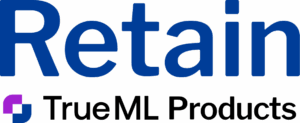Did you know that according to the American Hospital Association, Americans owe $220 billion in medical debt? And 14 million consumers in the country owe more than $1,000 in medical bills each? Medical debt continues to be a big source of financial hardship for many people, with stakeholders all across the industry working to find a solution.
Just like the current situation with student loans, the rules, policies and trends on medical debt are often in flux. Stark changes to the system often happen when a new administration enters the White House, leaving consumers and businesses to navigate the fiscal impacts.
In July of 2025, there was a major change that made it possible for medical debt to show up on credit reports once again. Join us as we go over the current state of medical debt and the impact it could have on your customers and collection strategy.
Insights on the Changes to Medical Debt Rules
Back in April of 2023, TransUnion, Experian and Equifax made the decision to stop medical debts of less than $500 from showing up on their credit reports. This kicked off efforts by the prior administration, which the Consumer Financial Protection Bureau (CFBP) in January of 2025 finalized in a rule that prevented any medical debt from showing up on credit reports. This move also stopped lenders from using consumer medical data in their decision to determine creditworthiness and approve new lines of credit.
It looked like medical debt was no longer going to be a roadblock for consumers participating in the financial system. However, that changed in July when a federal judge in Texas overturned the new medical debt rule set by the CFPB (in Cornerstone Credit Union League v. Consumer Financial Protection Bureau). The judge felt that the CFPB had overstepped their jurisdiction, and there currently aren’t many indications that this ruling will be overturned.
So, where do the medical debt rules stand? Medical debts under $500 still won’t be included in credit reports, and bills over that amount take one year to appear. While this gives consumers some time, many experts expect medical debt to grow. This ruling has left many consumers across the country worrying about how their credit score will be impacted.
Why Medical Debt in 2025 is Expected to Grow
Many healthcare and financial experts expect medical debt in the U.S. to grow even more as 2025 continues. One of the main reasons is that recent cuts to Medicaid will leave more consumers without a reliable source of medical insurance. Reports estimate that roughly 2.2 million families are more likely to have medical debt due to losing Medicaid coverage.
Another key factor is that the Affordable Care Act premium tax credits are expiring. This will increase the costs of private insurance coverage, and potentially lead to more people becoming uninsured. These factors together raise the risk of more families enrolling in high deductible insurance plans with lower monthly premiums, which could lead to more consumer debt when an emergency strikes. In fact, a recent Federal Reserve report found that 37% of adults can’t afford a $400 medical emergency. That’s almost $1,000 less than the average insurance deductible.
The potential rise in medical debt in 2025 will make it more difficult for many consumers to manage their finances. Other economic factors like groceries being more expensive, shifts in inflation and student loan repayments picking back up, only add to the pressure. As a result, many collection strategies will need to adapt, or they could see a drop in repayment performance.
What These Medical Debt Trends Mean for Your Customers and Collection Strategy
The common thread with the current state of medical debt is that more Americans are poised to be dealing with heavier financial burdens. Since the average medical debt for American families is slightly over $1,000, there could be more opportunities for smaller amounts. With larger medical debts weighing heavy on credit scores, people will be more incentivized to take care of smaller debts to improve their credit.
Even when people are motivated to take care of their debt, it’s often still a challenge for companies to reach them effectively. The current state of medical debt is likely going to add to these difficulties. The vast majority of medical collections communicate through phone calls and physical mail. That means other creditors and collectors are going to have a tougher time breaking through all the noise in those channels.
Experts in collection services agree that medical debt has emphasized the importance of digital communications. With phone calls and physical mail becoming an even more crowded medium, combined with more consumers preferring not to be contacted that way, companies need to adapt. Outbound calling is only becoming more difficult, which is why a digital-first omnichannel approach is one of the best ways to improve collection performance.
To help address these trends, many businesses are turning to self-serve portals once someone engages with a digital communication. Self-serve portals empower customers by giving them more control over the repayment process and provide a low-friction way to make a payment.
Ready to Collect Faster from Happier People?
Medical debt is going to have an impact on consumer finances for the foreseeable future, and as a result, debt collection will need to adapt. As the likelihood of your business communicating with people in medical debt increases, your collections strategy should honor their unique preferences.
Retain by TrueML Products can automate digital communications using machine learning for better repayment results. By creating a user-friendly digital experience, your business can keep operating costs low while honoring your customer’s communication preferences. If you want to optimize the engagement of your debt collection communications, schedule your consultation with our team today.



